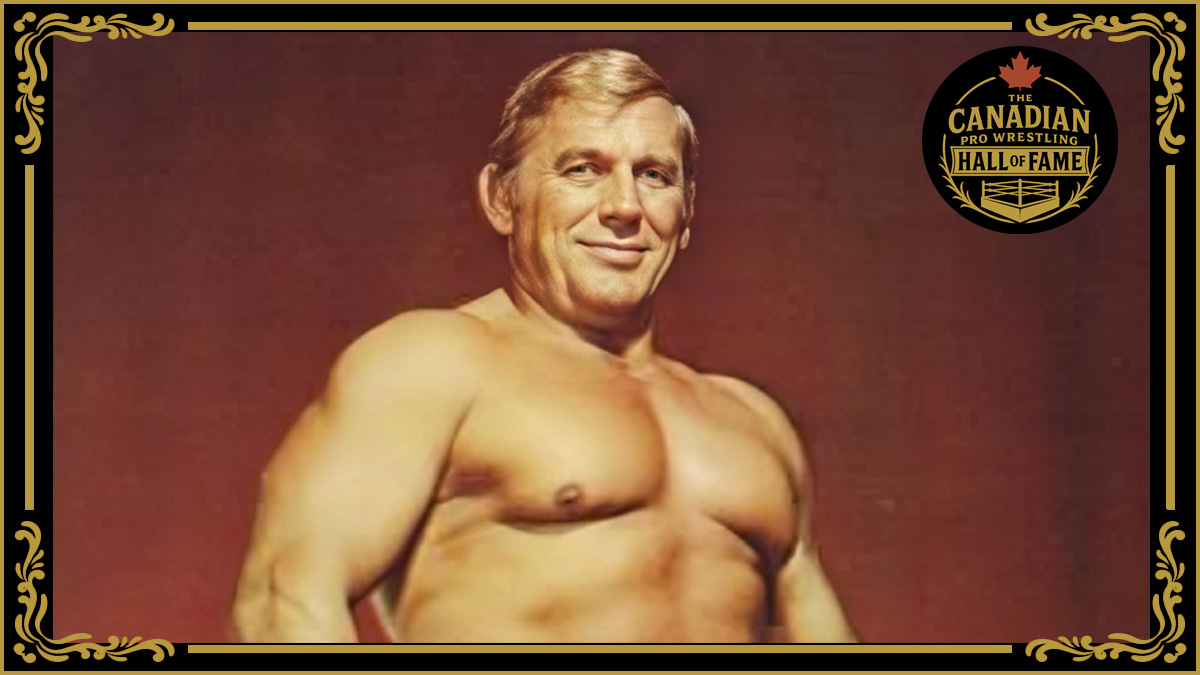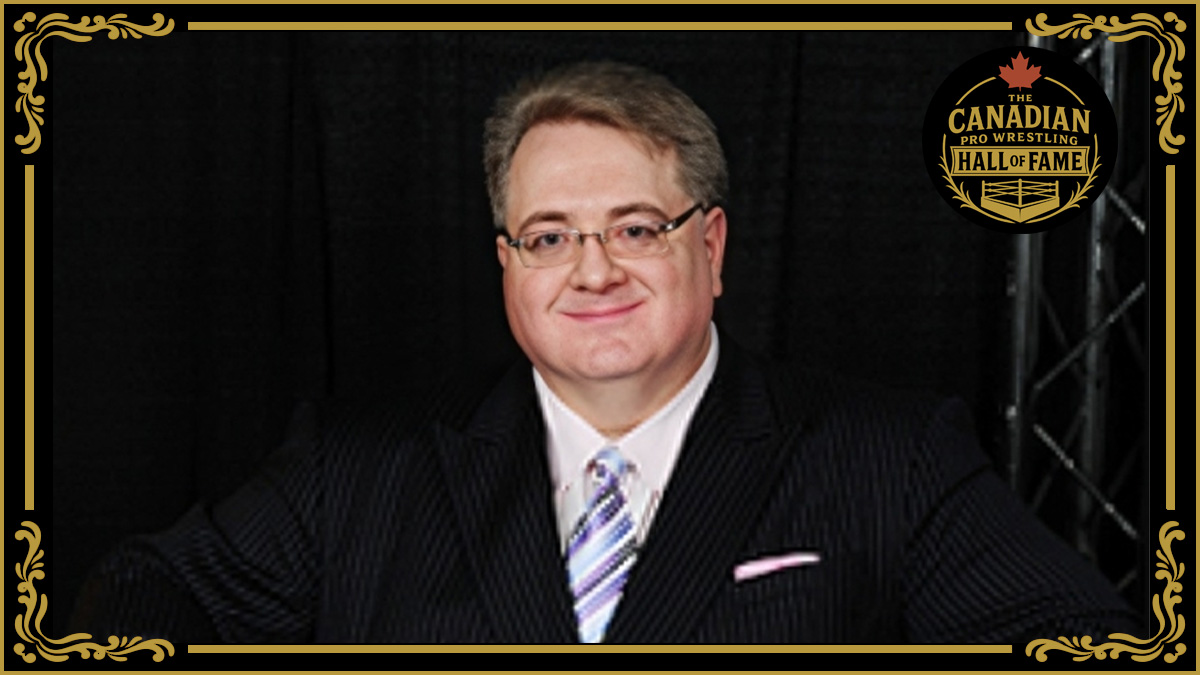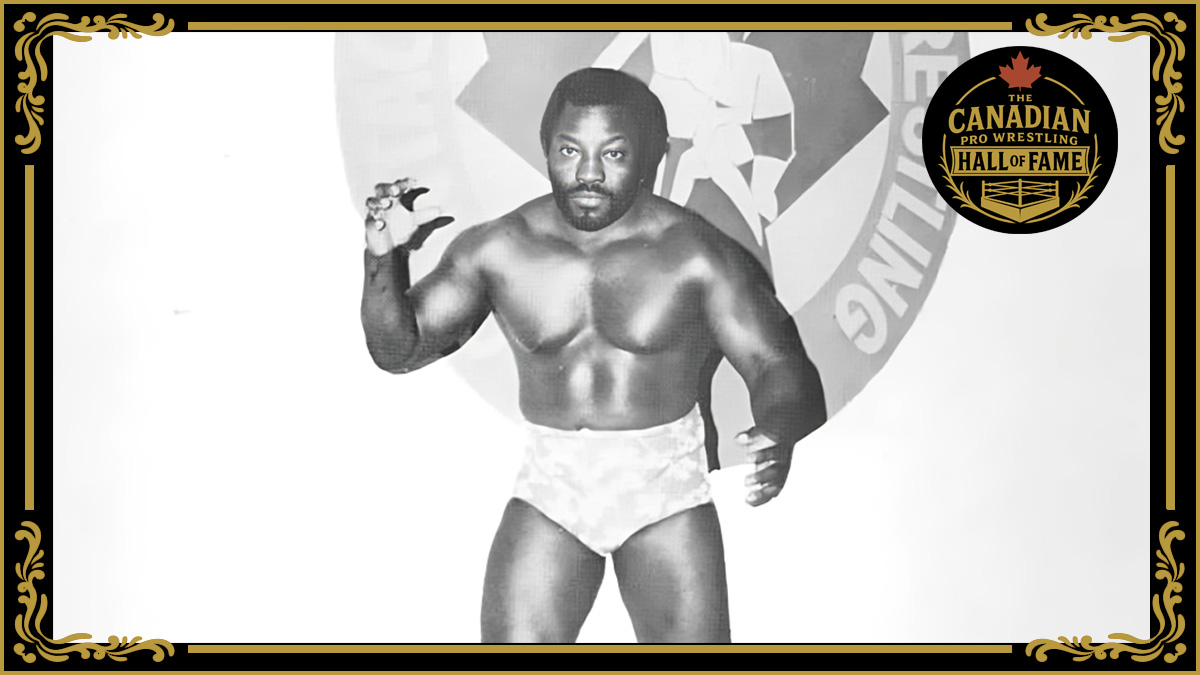The great, revolutionary Edouard Carpentier died Saturday night, October 30, 2010, at 7:30 p.m. at his house in Montreal near the Cote-des-Neiges cemetery. He was 84.
He had a heart attack in 2000, and on Saturday he sensed a similar sensation and called 911. By the time the ambulance arrived at the house, he had died.
Carpentier had been in poor health for many years, battered from the acrobatic, high-flying style that he popularized in the wrestling business. In August, he was hospitalized and amputating a leg was discussed.
Edouard Ignacz Weiczorkiewicz was born outside Lyon, France on July 17, 1926, to his Russian father, an innkeeper, and his Polish mother. During the Second World War, he was captured by the Germans, and escaped to join the French Resistance.
After the war, Weiczorkiewicz participated in both the 1948 Olympic Games in London and in Helsinki in 1952 in gymnastics, though he was an alternate and he never medaled. His talents were in the rings and the trampoline.
It was Lino Ventura who suggested that he try wrestling and learned the Greco-Roman style first.
Larry Moquin and Frank Valois discovered Carpentier while touring in France. They returned to Montreal, and raved to promoter Eddie Quinn about him; Quinn dispatched Yvon Robert with them to see what they could do, as Robert was part owner of the territory at the time, and Moquin was an assistant-booker to Quinn and Robert.
In France, there was a tag match with Robert and Carpentier against Moquin and Valois, where Robert virtually refused to tag with Carpentier so he could see him wrestling. After the match, Robert, because of his position in the territory, offered a contract to Carpentier.
In 1956, Weiczorkiewicza arrived in Montreal. His debut, against Angelo Savoldi, was April 18th at the Montreal Forum. Savoldi recalled that first match. “[The fans] went wild. I lost to him in about 15 minutes. It was a 30-minute match. In about 15, 16 minutes, he jumped on my shoulder — how the hell he did it, I don’t know — and he rolled me over, and that was it.”
Within months, as Edouard Carpentier — named after a famous French boxer, Georges Carpentier, with who he claimed lineage with in storylines — he would revolutionize Canadian wrestling with his acrobatic moves and his impressive physique, shooting to the top of the wrestling world.
“When I come in 1956, I come because I’m the European champion and I have no more competition,” Carpentier explained in 1999. Montreal promoter Eddie Quinn seized Carpentier and was soon promoting him across North America.
In 2006, Carpentier told SLAM! Wrestling about his difficulties with Quinn.
Oh my, he ripped me off so much,” said in French. “I went to wrestle in New York in front of a packed house, Argentina Rocca was my partner, and Vince [McMahon] Sr. sent my cheque to Eddie Quinn who then called me to let me know that he had my cheque, $1,000, and I was jumping with joy as I had never made that much before. I go back the following week for a TV wrestling show and Vince Sr. asked me if I had received the cheque and I answered, ‘Yes I did, thank you very much, wow $1,000, I never made that much for a match.’ So following this rematch Vince Sr. sent the cheque directly to my house, $2,500. So I called Vince Sr., and tell him there must be a mistake my first match I received $1,000 and now, a week later, for the rematch, I get $2,500. So Vince Sr. answers, there is no mistake, it was $2,500 for the first match and $2,500 for the rematch. It was Eddie Quinn, who pocketed $1,500 of my money from that first match!”
Quinn knew Carpentier was a moneymaker, and fought to protect his gravy train. A letter Quinn sent to NWA President Sam Muchnick in 1957 was leaked to New York Daily Mirror writer Dan Parker.
“Getting back to Carpentier you seem to overlook the fact that Carpentier is my personal property. He does not belong to you or the National Wrestling Alliance. He is not recognized by you and neither does he claim to be NWA champion. He met and defeated Lou Thesz June 14th in Chicago via disqualification. In a return match in Montreal he met and was defeated by Lou Thesz July 24th. You should be able to add two and two. I have consulted my attorney on the matter and they suggested that I write to you and have you return Edouard Carpentier’s $10,000. What you are holding it for no one seems to know. If this money has not been returned within ten days from this date, I will have my attorneys turn this matter over to the U.S. Department of Justice and the St. Louis police, c/o the Bunco Squad. My attorneys seem to think this is a combination of blackmail, extortion or grand larceny. Hope this will clarify everything.”
Sincerely yours, Eddie Quinn
Carpentier’s biggest successes came early in his career. He defeated NWA champ Lou Thesz in June 1957 by DQ when Thesz couldn’t fight in the third fall. Some promoters began recognizing Carpentier was the world champ, and it made the magazines.
The December 1957 edition of Boxing & Wrestling headlined “The New Heavyweight Champion of the World: Edouard Carpentier” and explained what happened: “Before a capacity house in Chicago last June, a muscular ex-gymnast from France scored an amazing upset when he defeated wrestling’s perennial champion, Lou Thesz. Edouard Carpentier, 26-years old native of Roannes, France finds himself now firmly seated on the plush throne and in position to become one of the most sensational champions in mat history. The new king is not a big man as wrestlers go. He stands only 5 feet 9-1/2 inches tall and weighs-in at a trim 220 pounds.”
Carpentier said that he never comprehended what happened, why he was erased from the record books. “I don’t know myself, why that is. I don’t understand it myself,” he said.
Carpentier would win many more titles, both in singles and tag teams.
Throughout his career, which lasted into the early ’80s, the 5-foot-10, 225-pound Carpentier was a good guy. “He was just loved in Canada, and anywhere in the States where he wrestled,” said Gene Kiniski. “Carpentier was great.”
The Flying Frenchman’s drop kicks, somersaults and cartwheels were the showy part of his solid repertoire, which included training in judo, boxing and savate. Killer Kowalski was a regular opponent. “I did all the work in the ring. I carried him,” bragged Kowalski. “He was a jumping bean. I’m not being mean here, but a lot of the things he did were not my ideas. But he was alright. He was another Pollack.” Besides the Killer, Carpentier had major feuds with Don Leo Jonathan, Hans Schmidt, Ivan Koloff, and John Tolos.
After the Rougeau promotion, Les As de la Lutte, closed down, Carpentier continued to wrestle from time to time for the promotions that were still running the territory. In 1978-79, he even teamed with a young Raymond Rougeau for Jack Britton’s promotion in Montreal. In 1980, to build up a huge match between Hulk Hogan and Jean Ferré (Andre the Giant), which was the first big match promoted by Gino Brito’s International Wrestling, Hogan fought Carpentier twice, winning both times, the last match in less than a minute, so the crowd could really hated Hogan. Hogan also beat Jackie Weicz, Carpentier’s nephew and another Frenchman.
He could be difficult for promoters, running hot and cold, said Paul “The Butcher” Vachon, who ran Grand Prix Wrestling. “He was very difficult. He was like a spoiled brat. And he was moody. You’d be talking to him or even wrestling him and having a good match, making him look good, and he’d be happy; then you’d twirl something and he’d curl and go sit in the corner and not talk to anybody for a while. He had an insecurity. It’s funny. The guy had everything going for him, but the guy was jealous of everybody around him that had any success. And I ended up partners with the son-of-a-gun in Grand Prix Wrestling.”
In a 2003 interview with WrestleTalk radio, Freddie Blassie agreed with Vachon. “Edouard Carpentier? Very scientific, but very conceited. He thought there was only one wrestler and that was Edouard. I don’t care much for Edouard Carpentier.”
Yet his success spoke for itself, said Paul Diamond (Paul Lehman). “He was very quiet in the dressing room, minding his own business,” Diamond recalled. “Just an easy-going guy, never kissed anyone’s ass. But because of his work, he always had work.”
A 1973 profile in the Montreal Gazette read: “Few athletes are in better shape than Edouard Carpentier, who is now a Canadian citizen. Besides earning his keep in what he calls ‘a sports spectacular,’ he runs five miles a day, lifts weights, practices self-defense tactics, does extensive calisthenics and gymnastics, and coaches young bulls who want to break into the circuit.”
As a trainer, some of his protégés included Michel “Le Justice” Dubois and Yvon Robert Jr., and he helped polish stars like André the Giant and Rick Martel. Carpentier’s nephew Jacky Weicz wrestled in the 1970s as Andre Carpentier and Roland Carpentier. He also did work as a stunt man.
During his career, he served as a colour commentator for Les As de la Lutte and Grand Prix Wrestling on occasion. Upon his retirement, he served as a commentator on International Wrestling and, later, the WWF French broadcasts.
Carpentier was inducted in the Pro Wrestling Hall of Fame in 2010, and the Wrestling Observer Hall of Fame in 1997.




